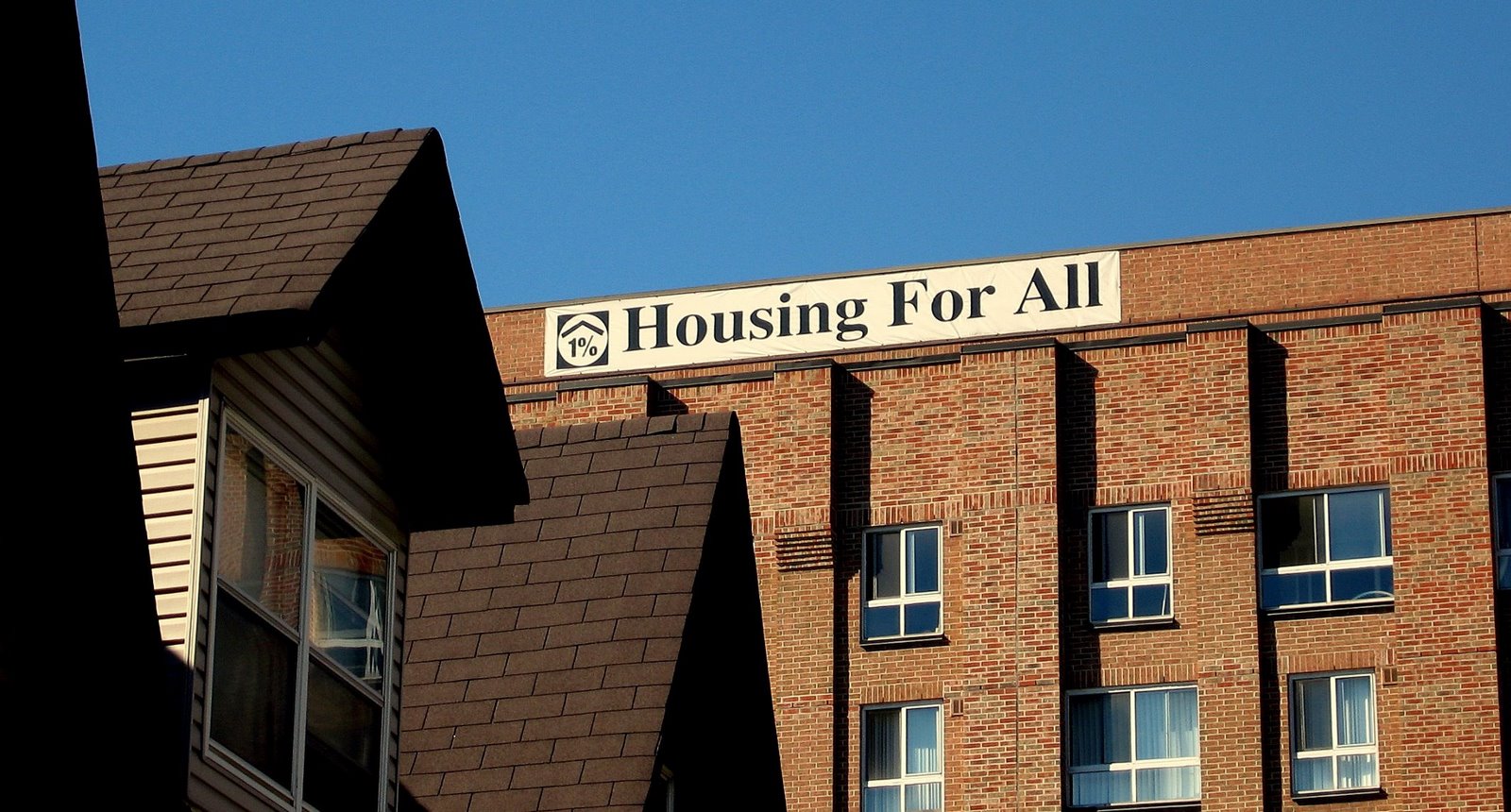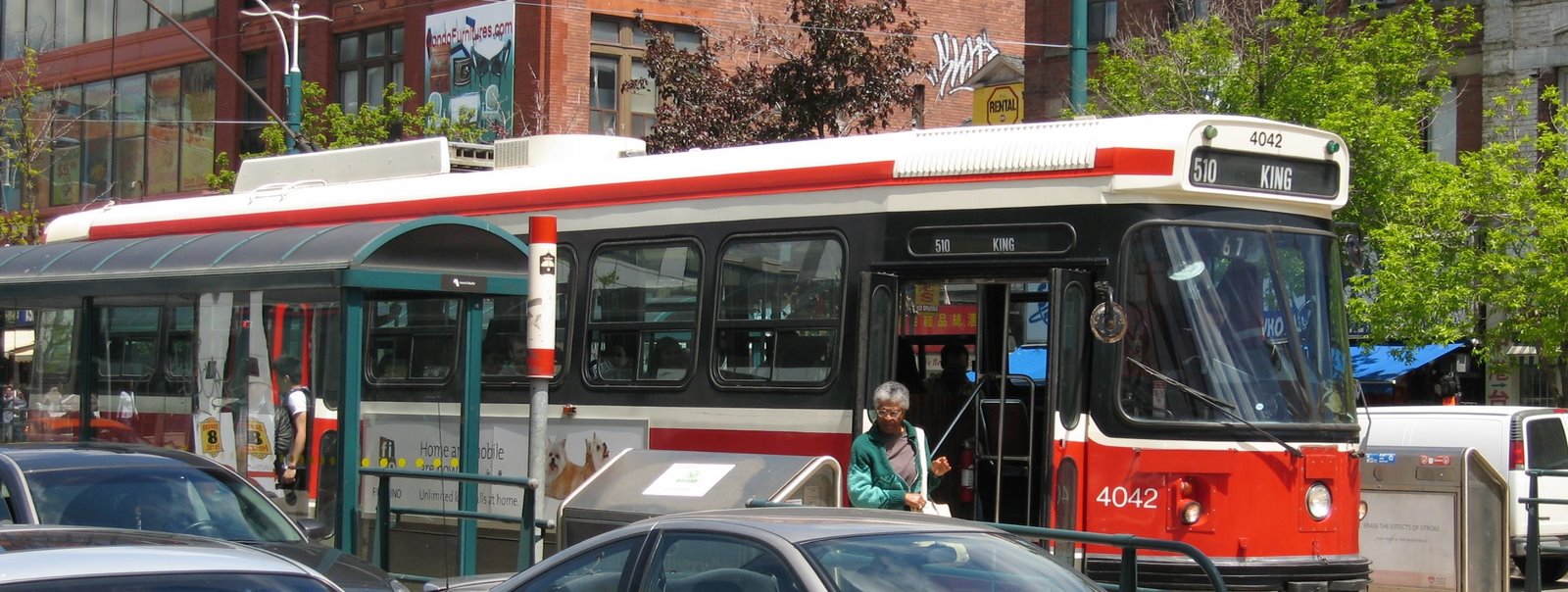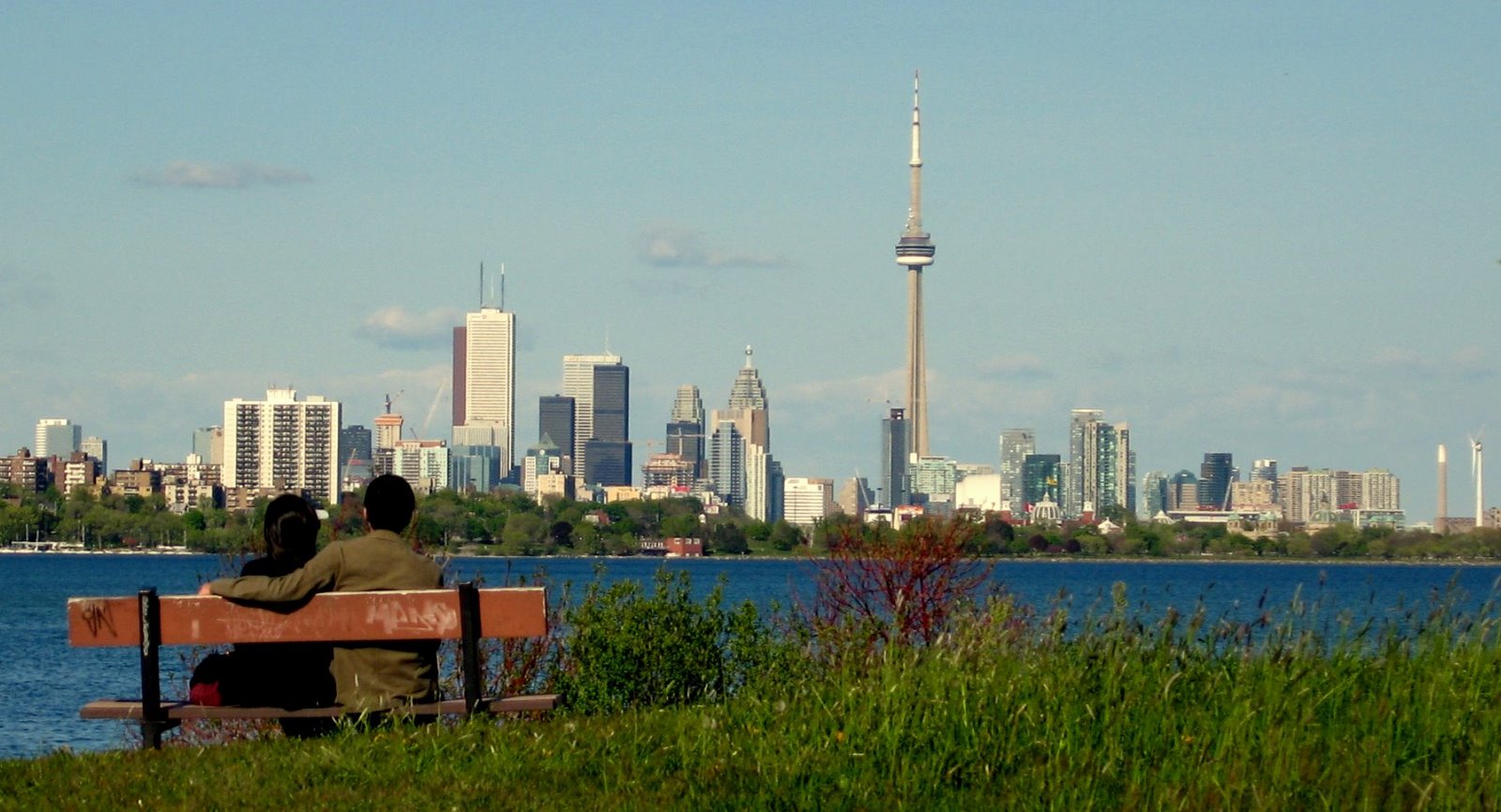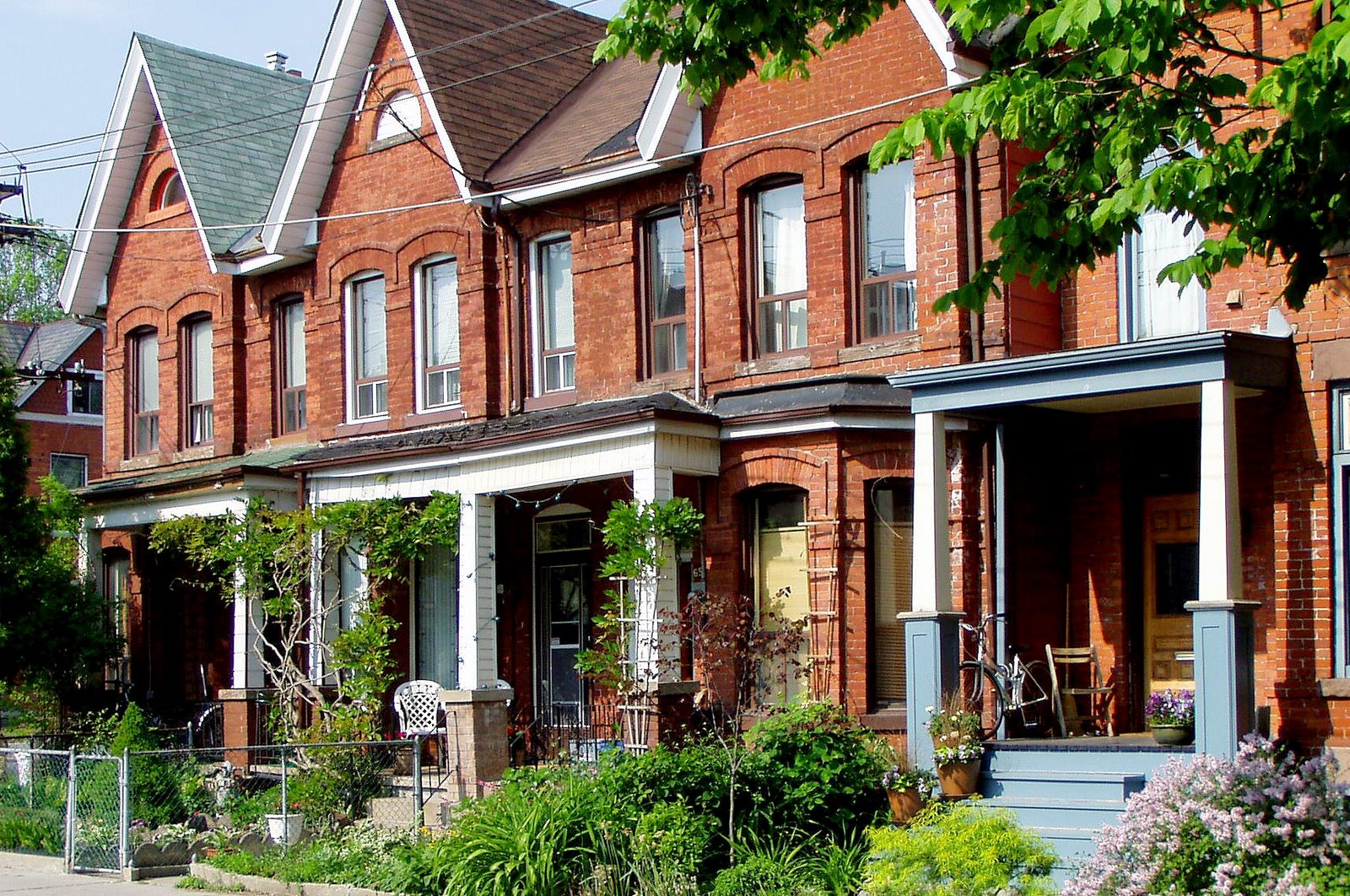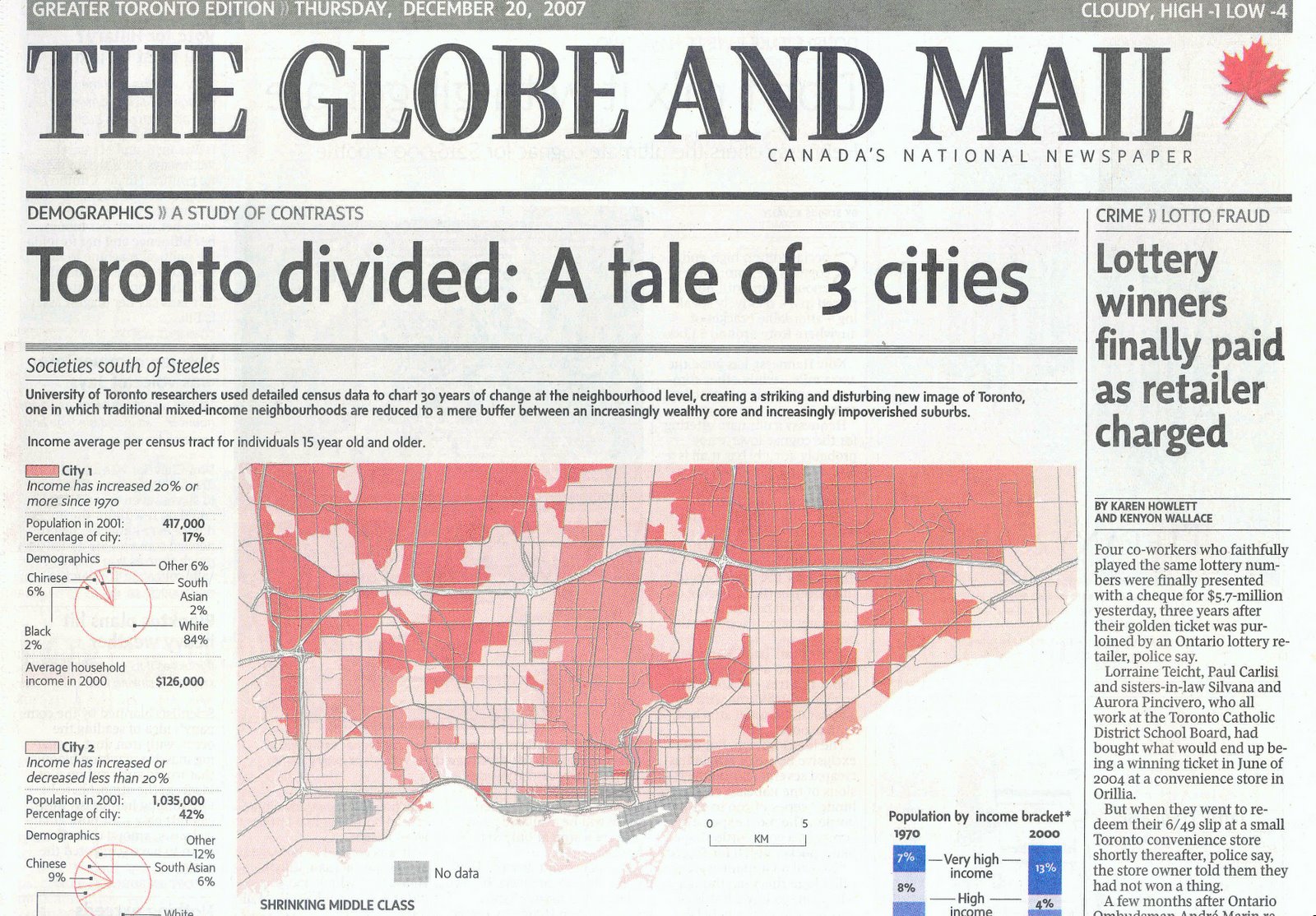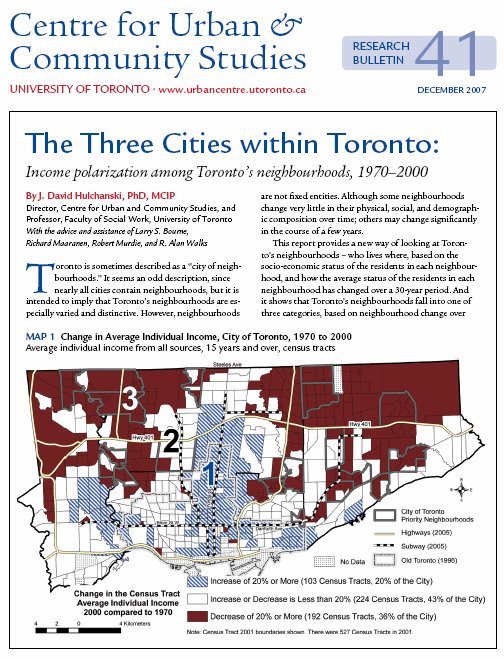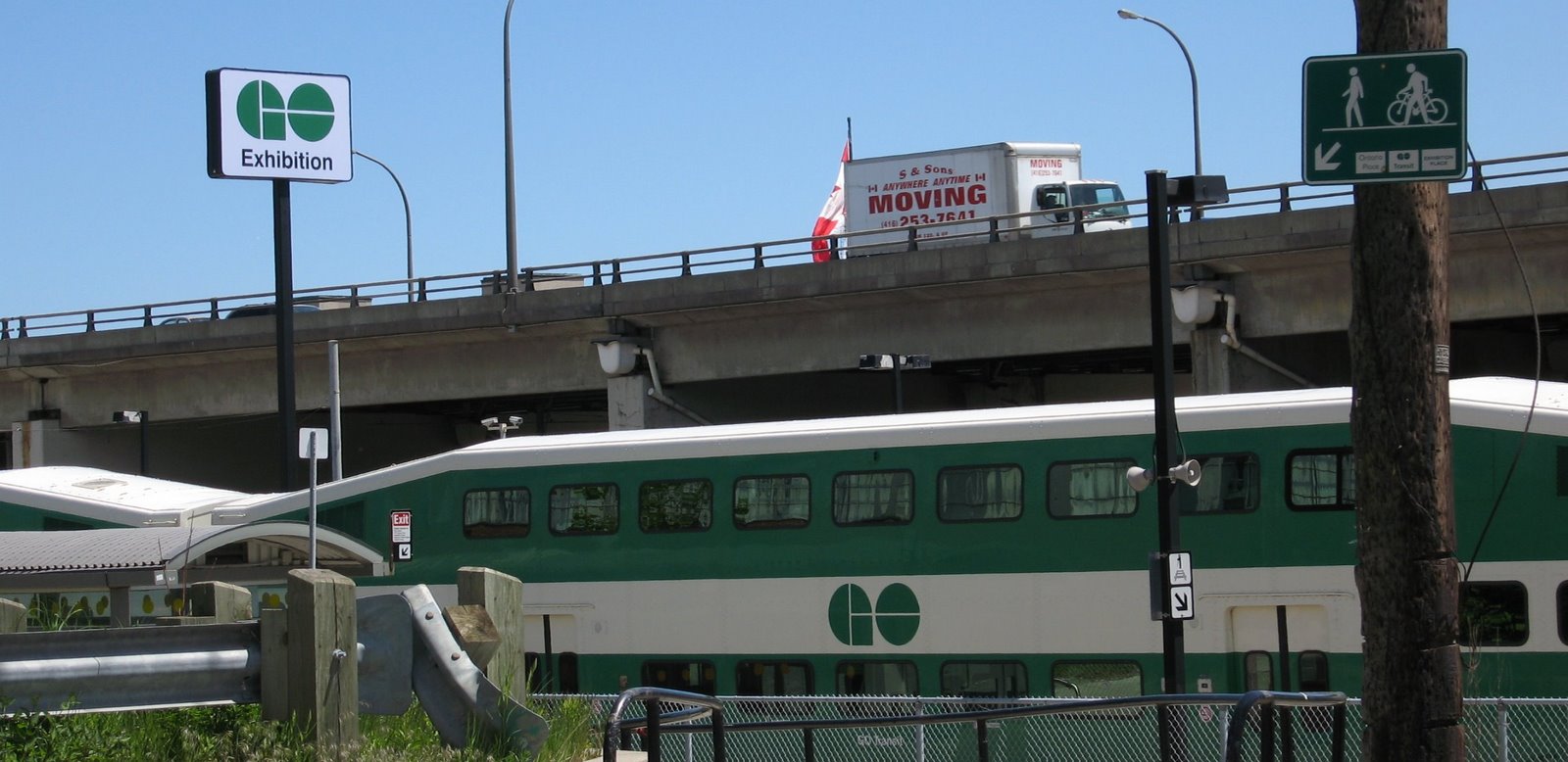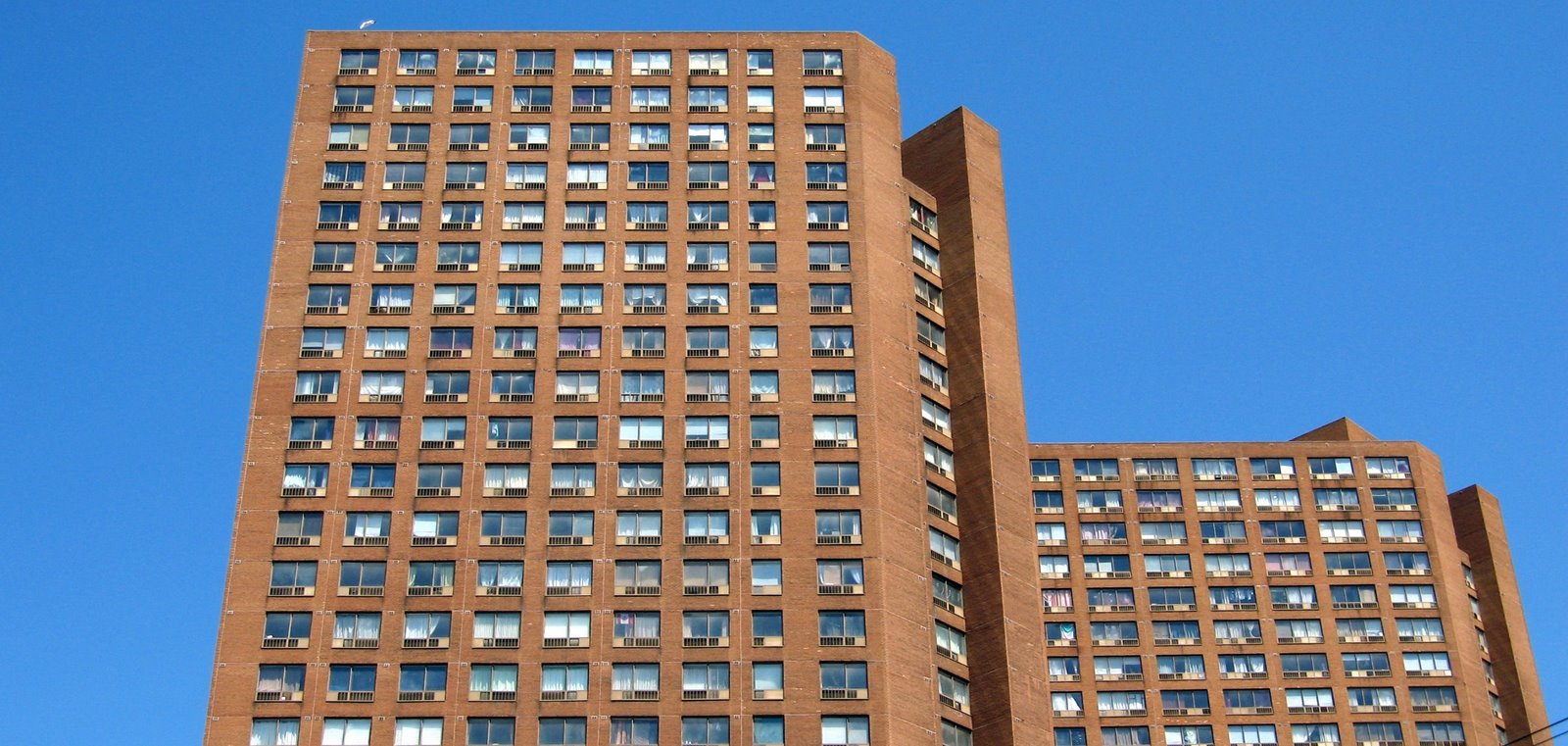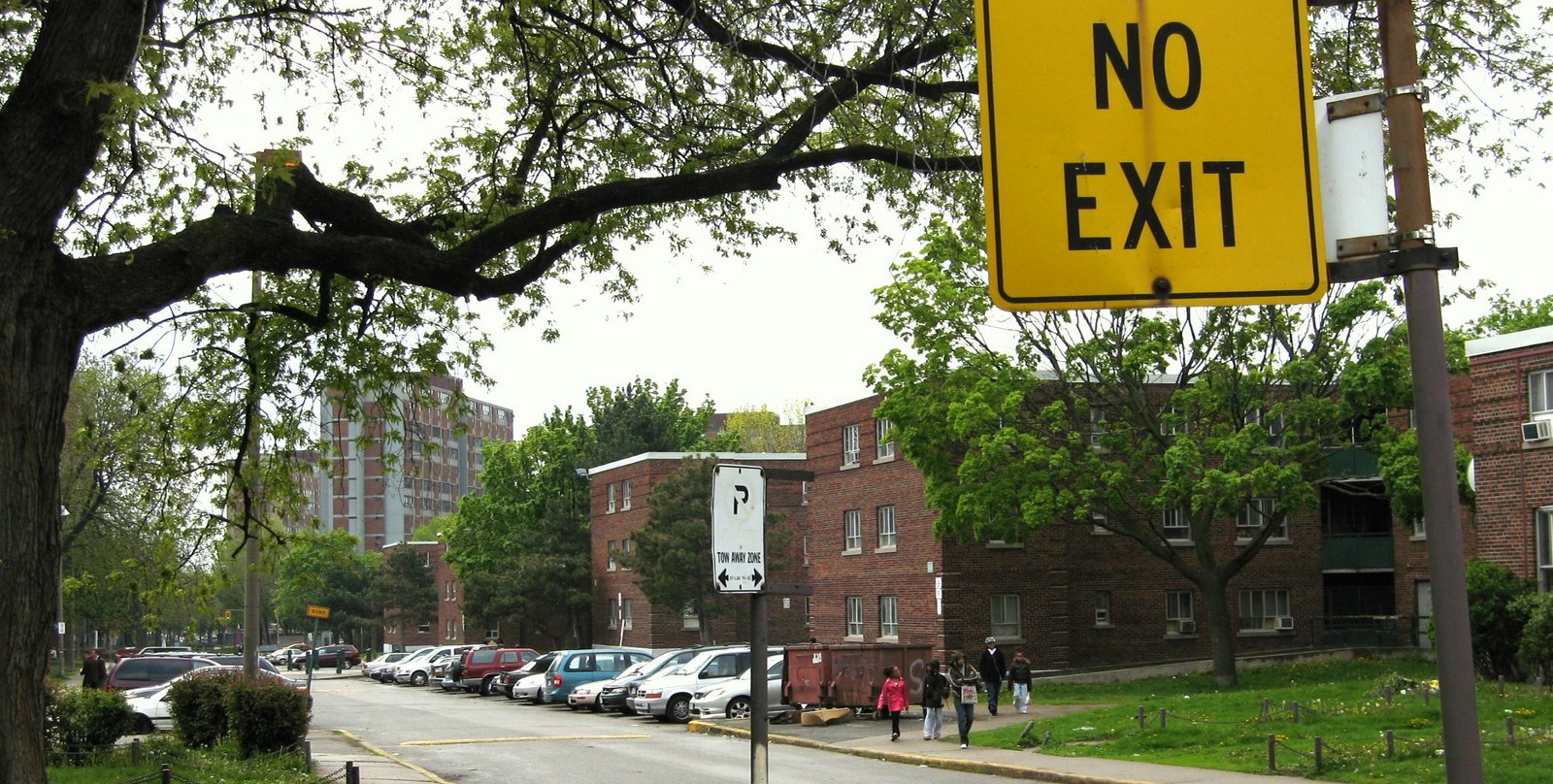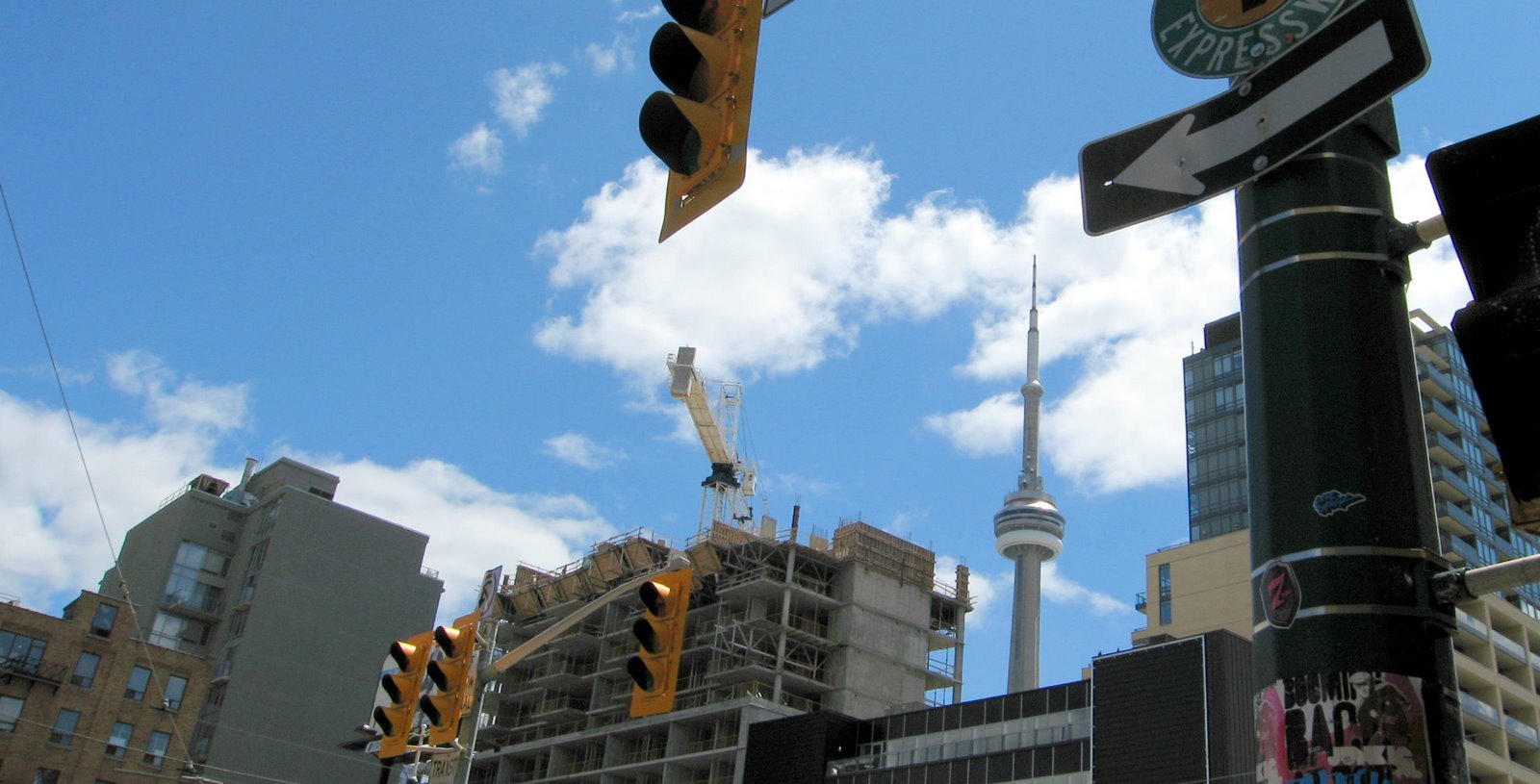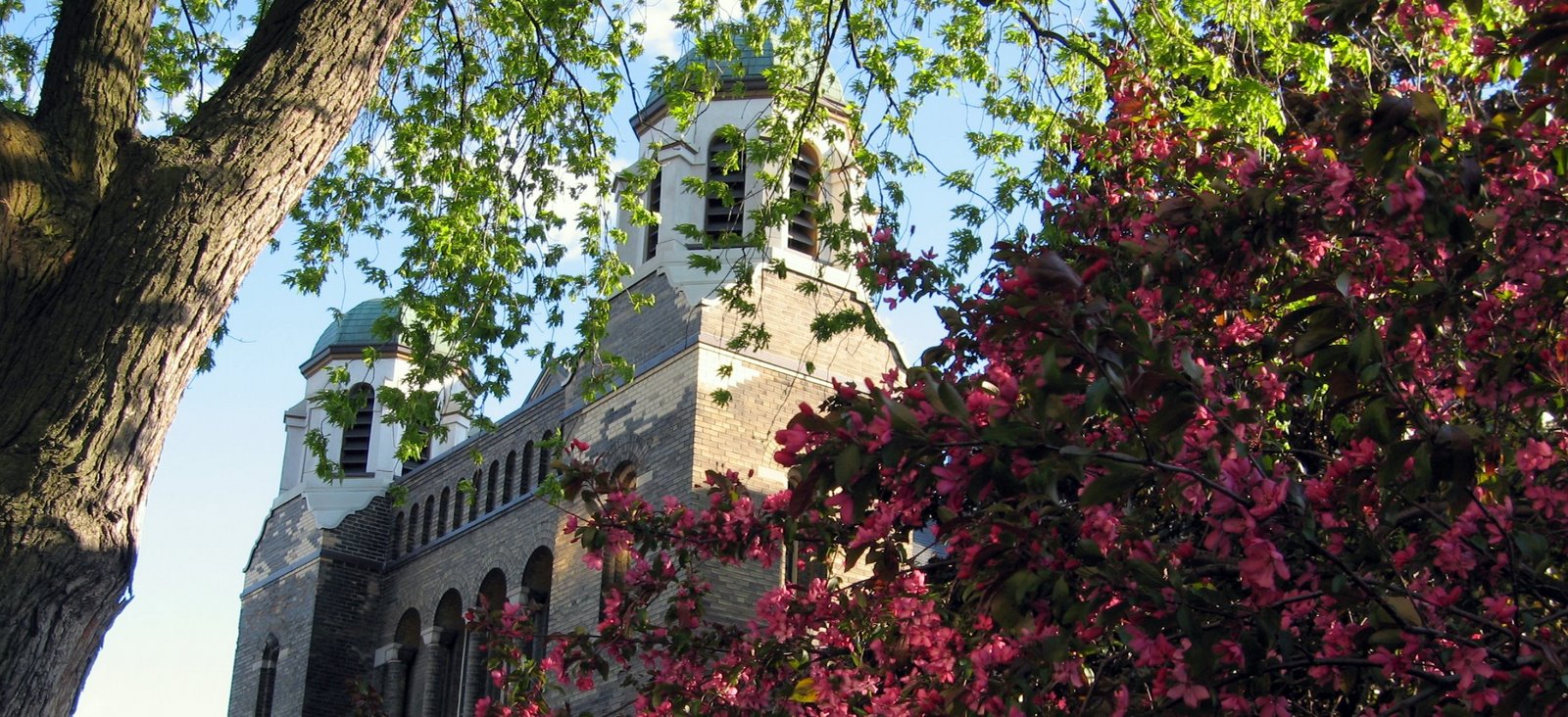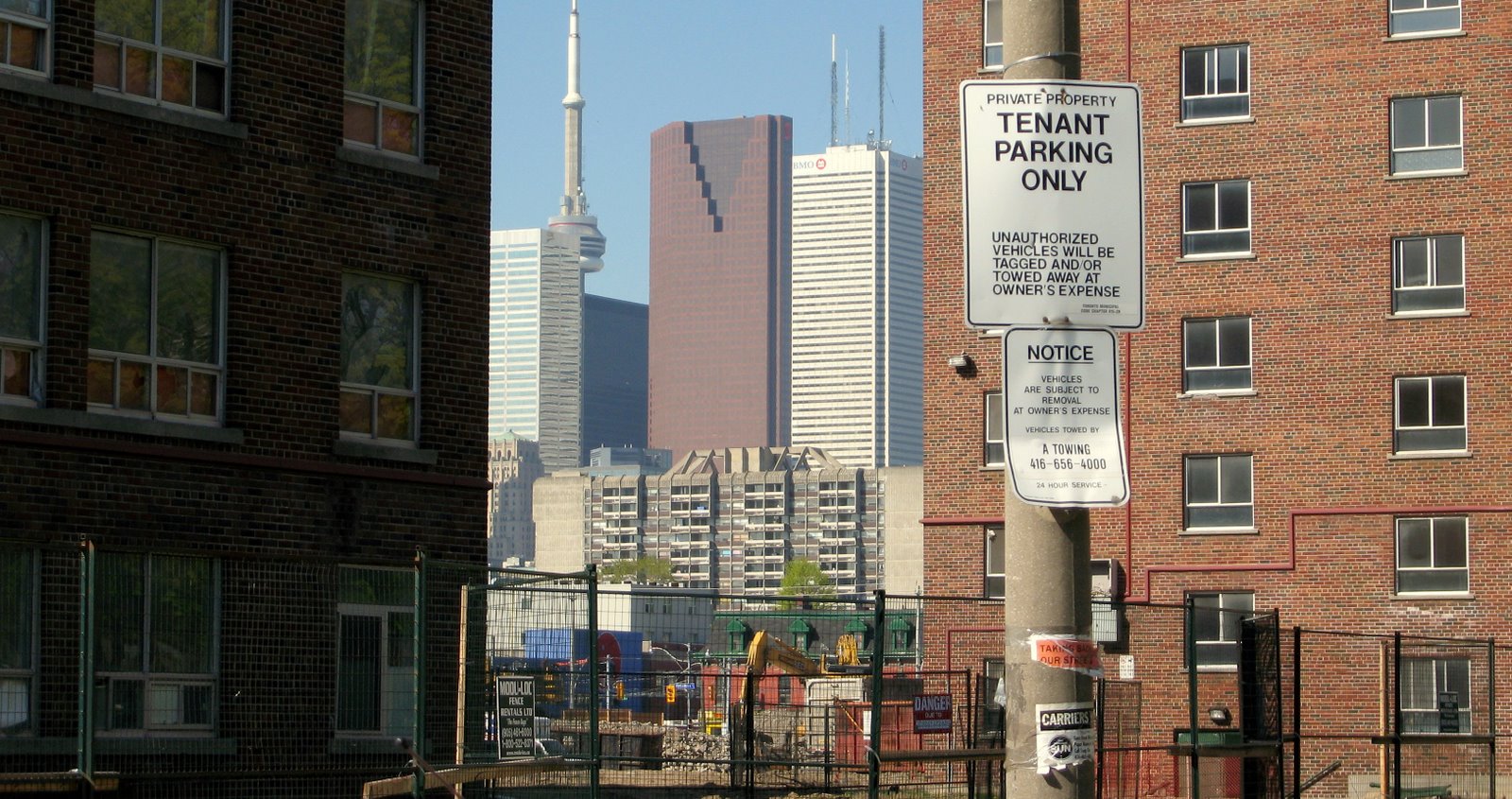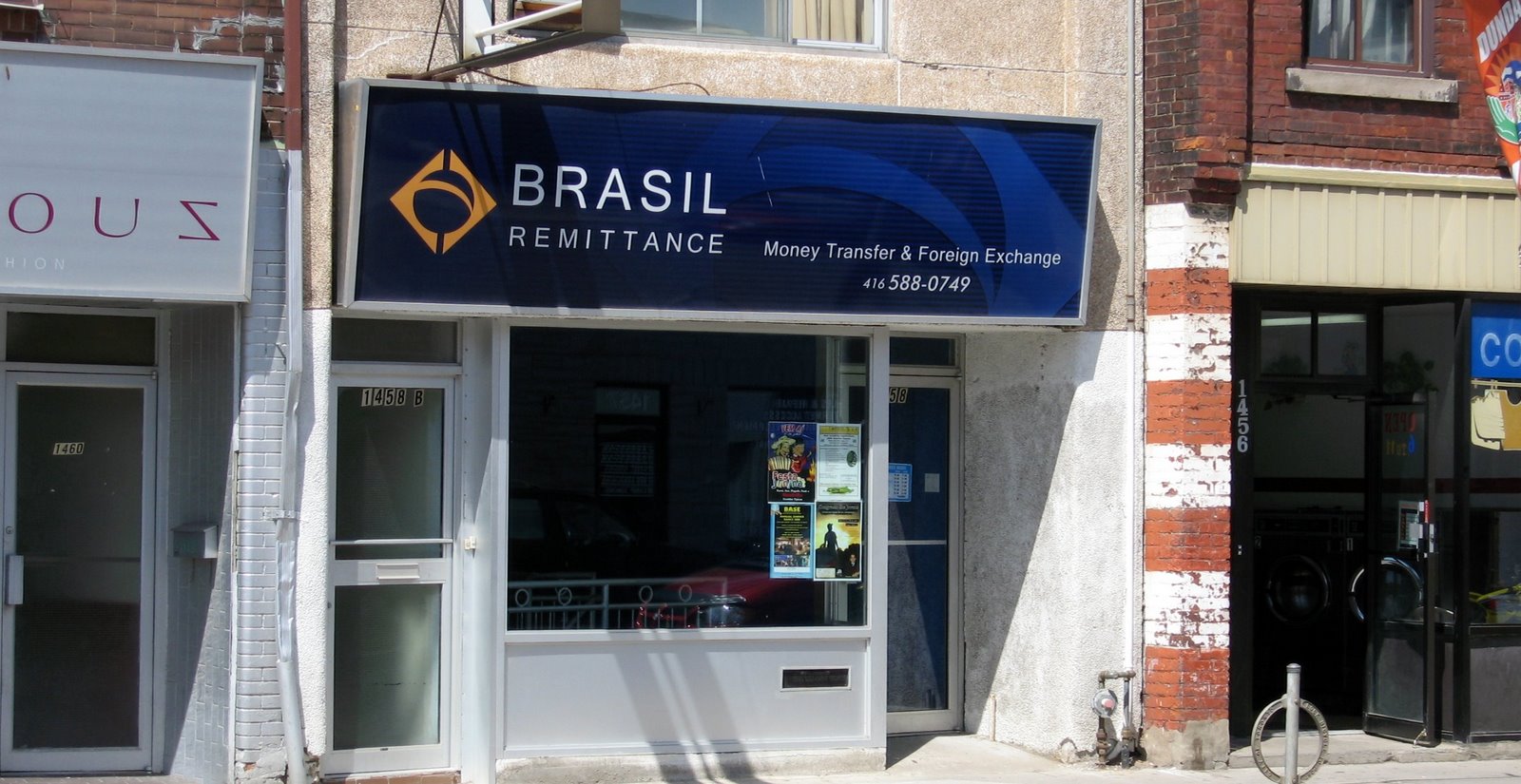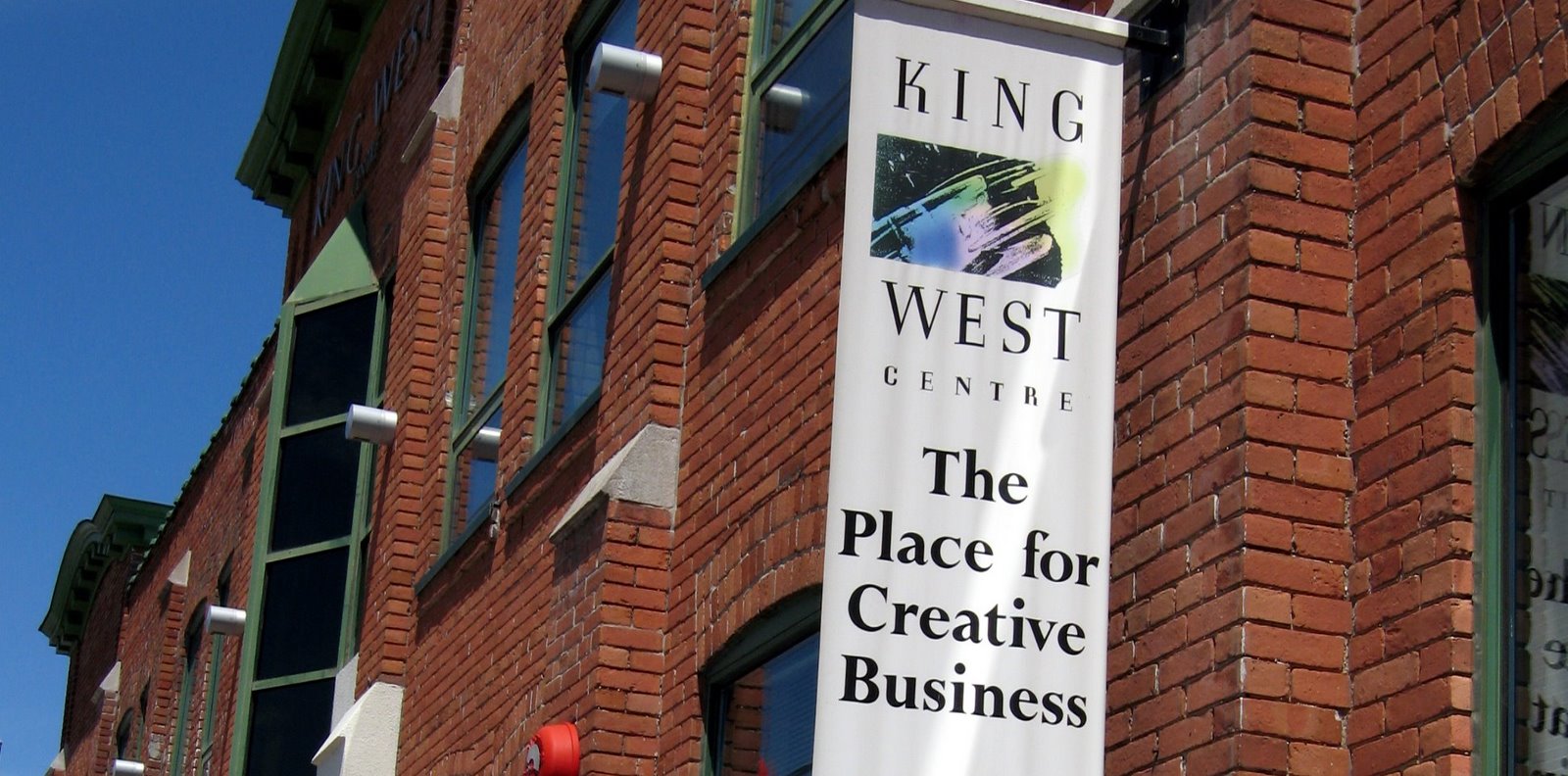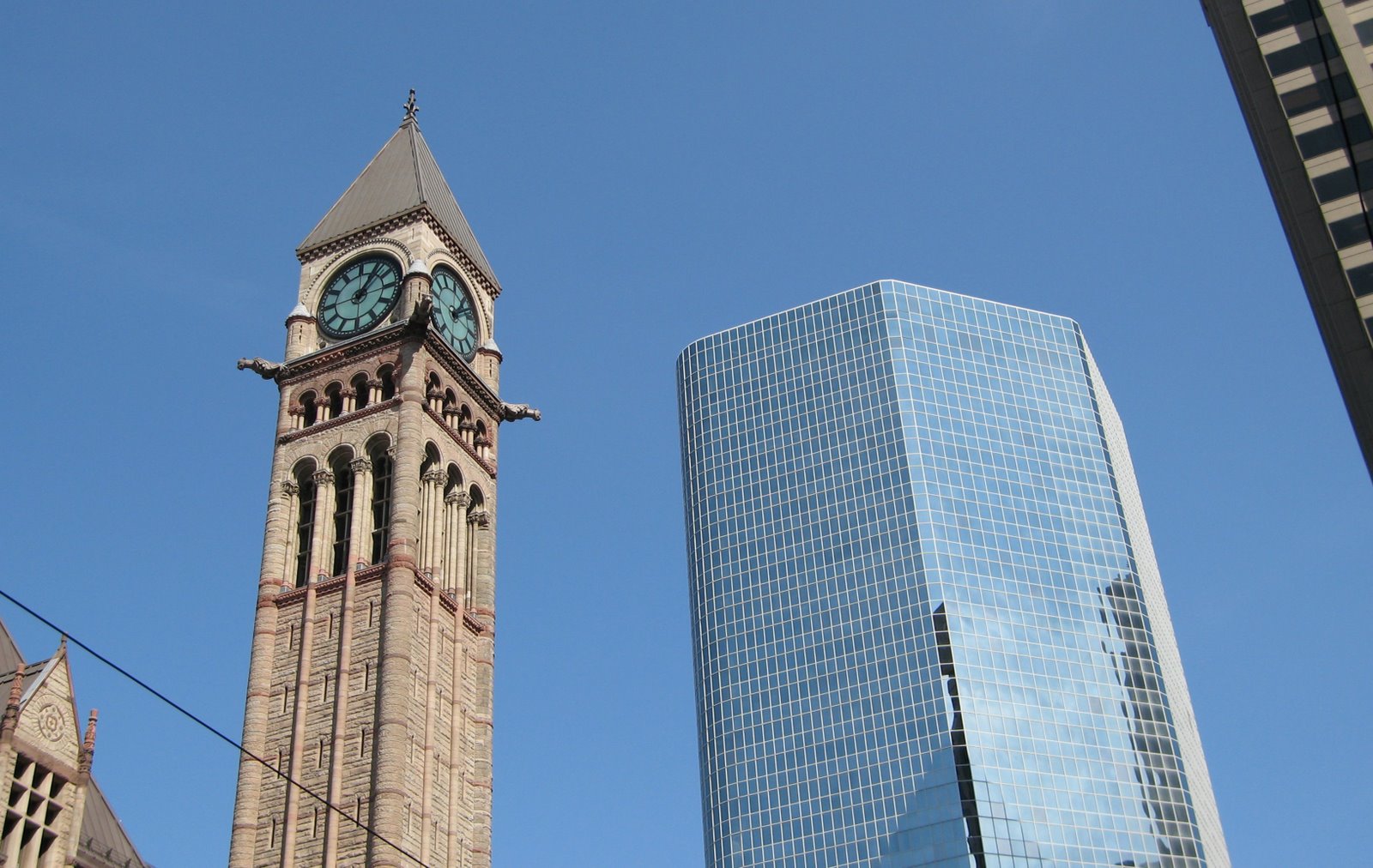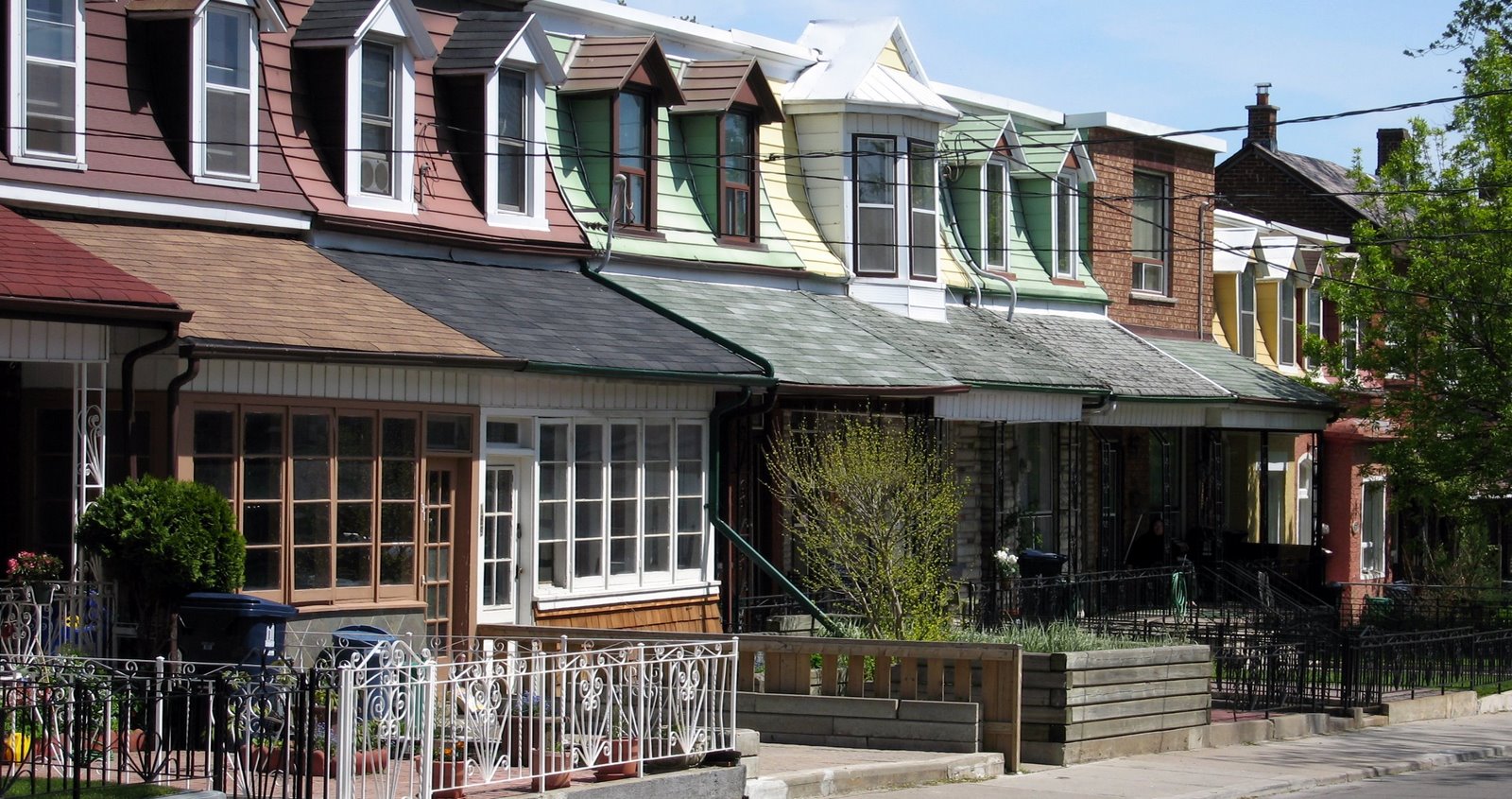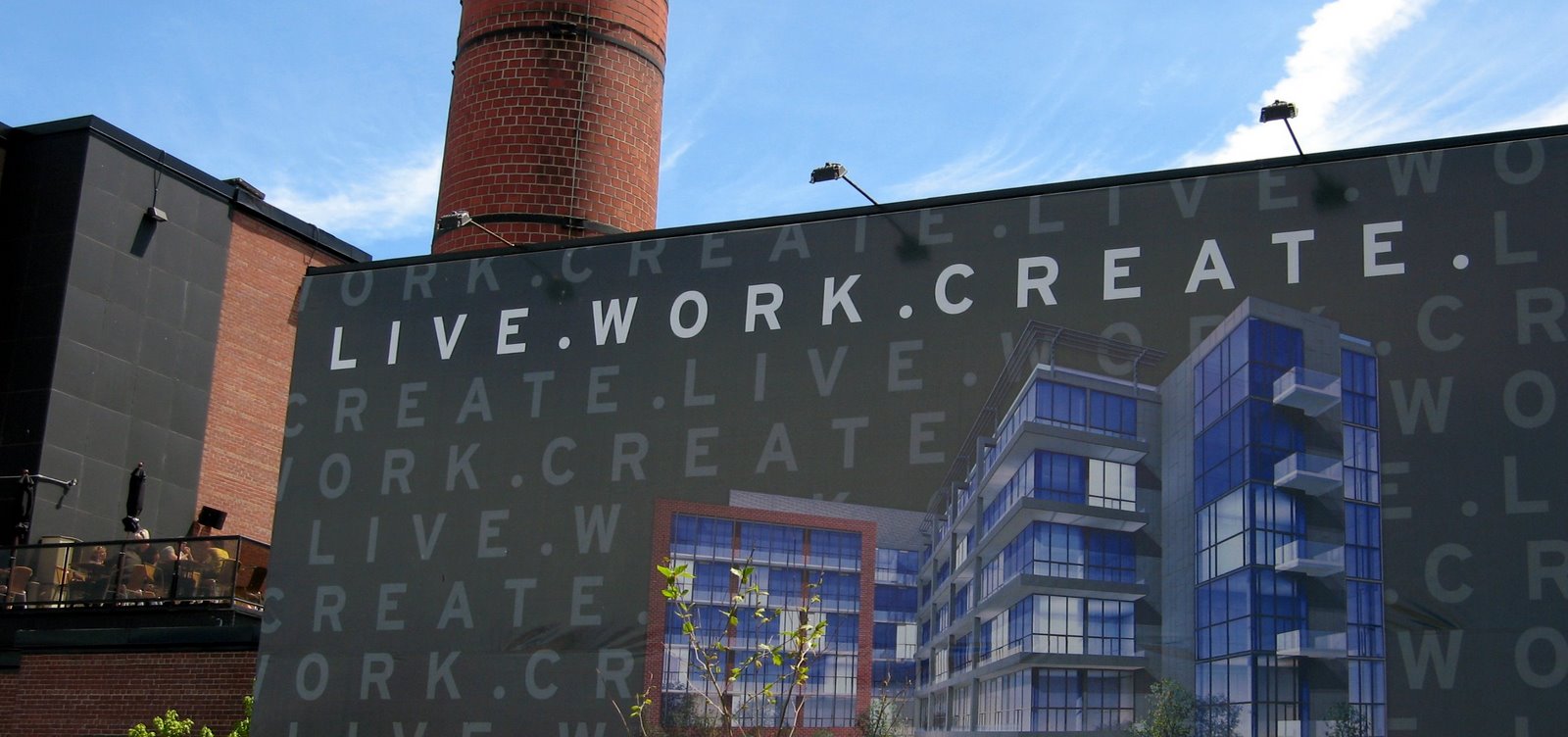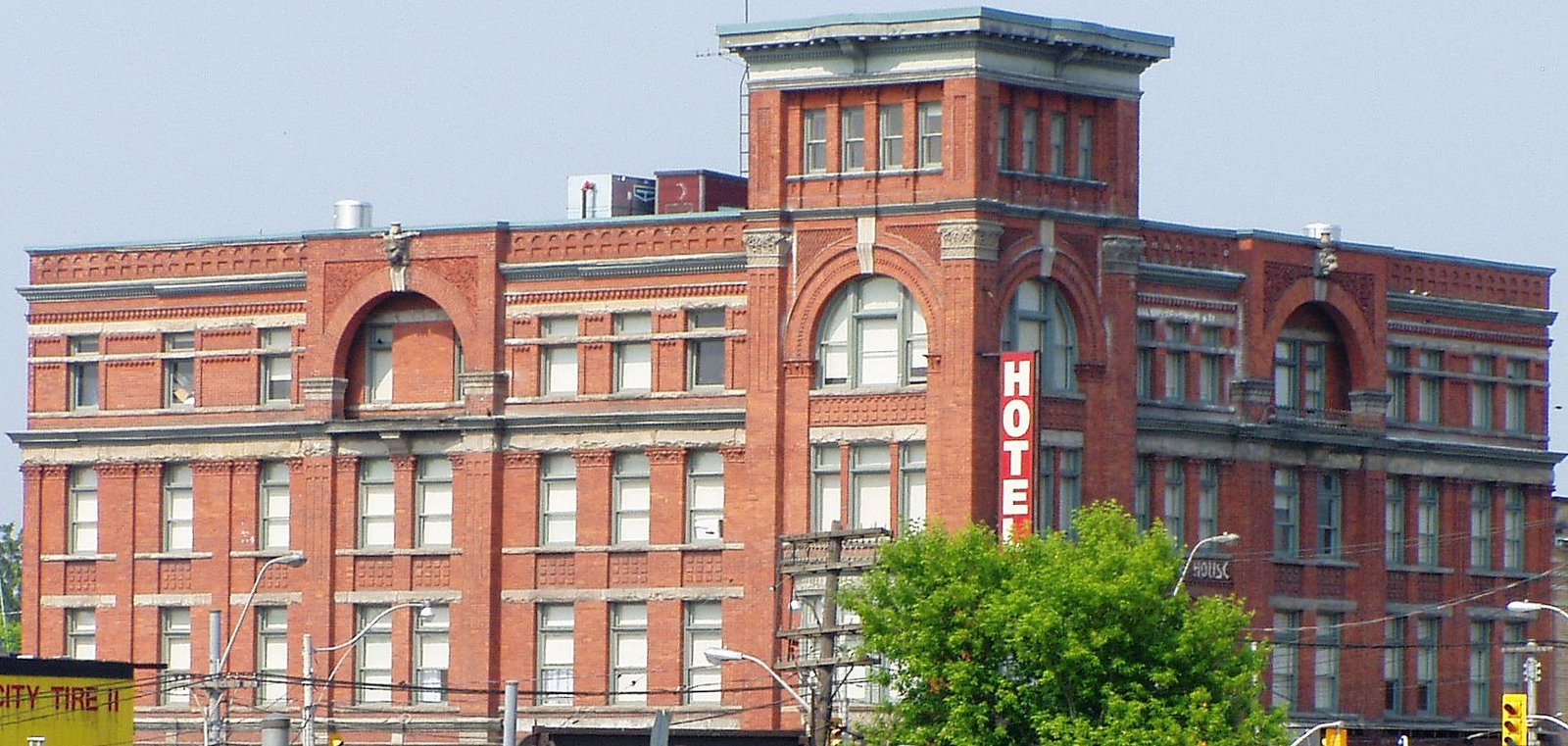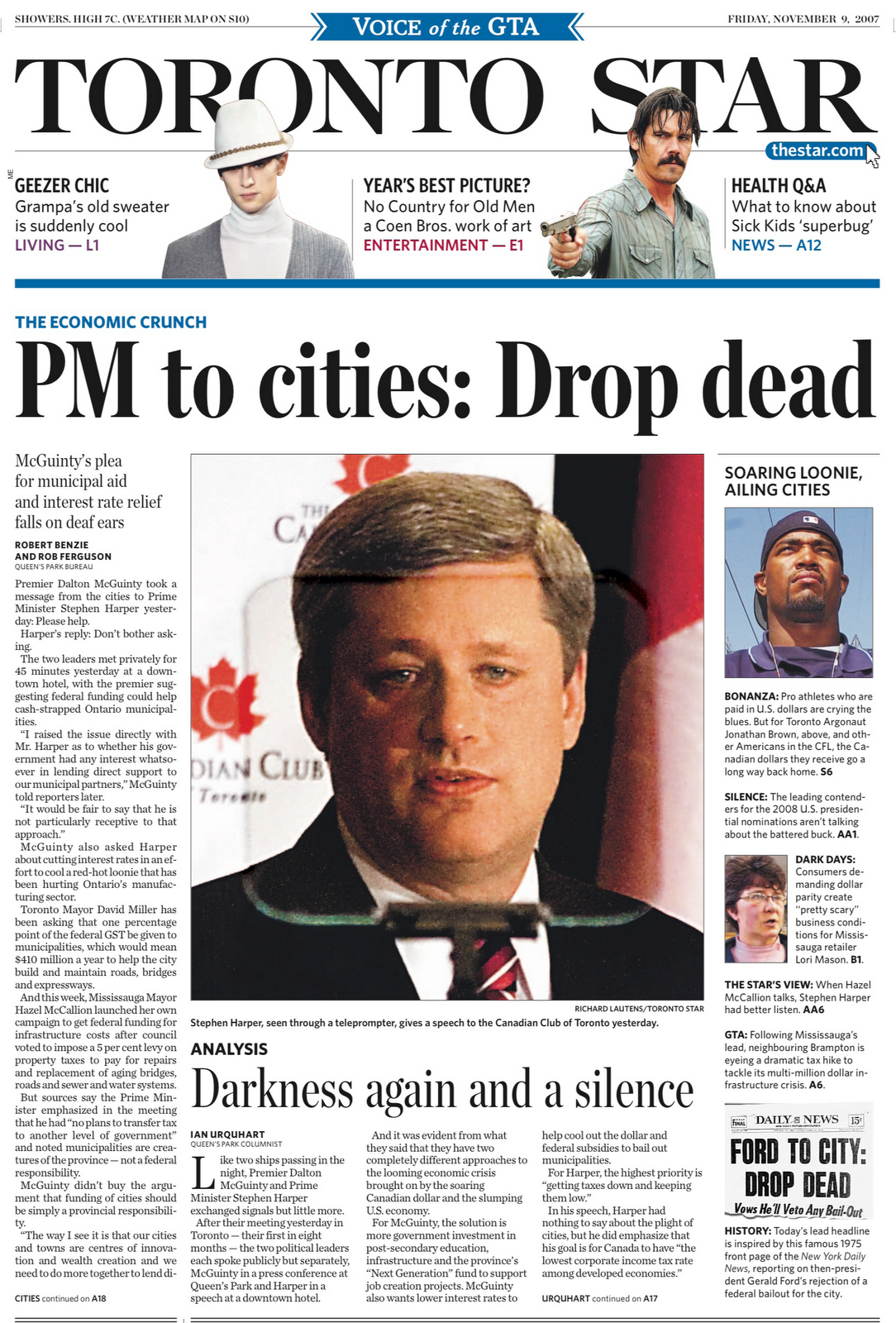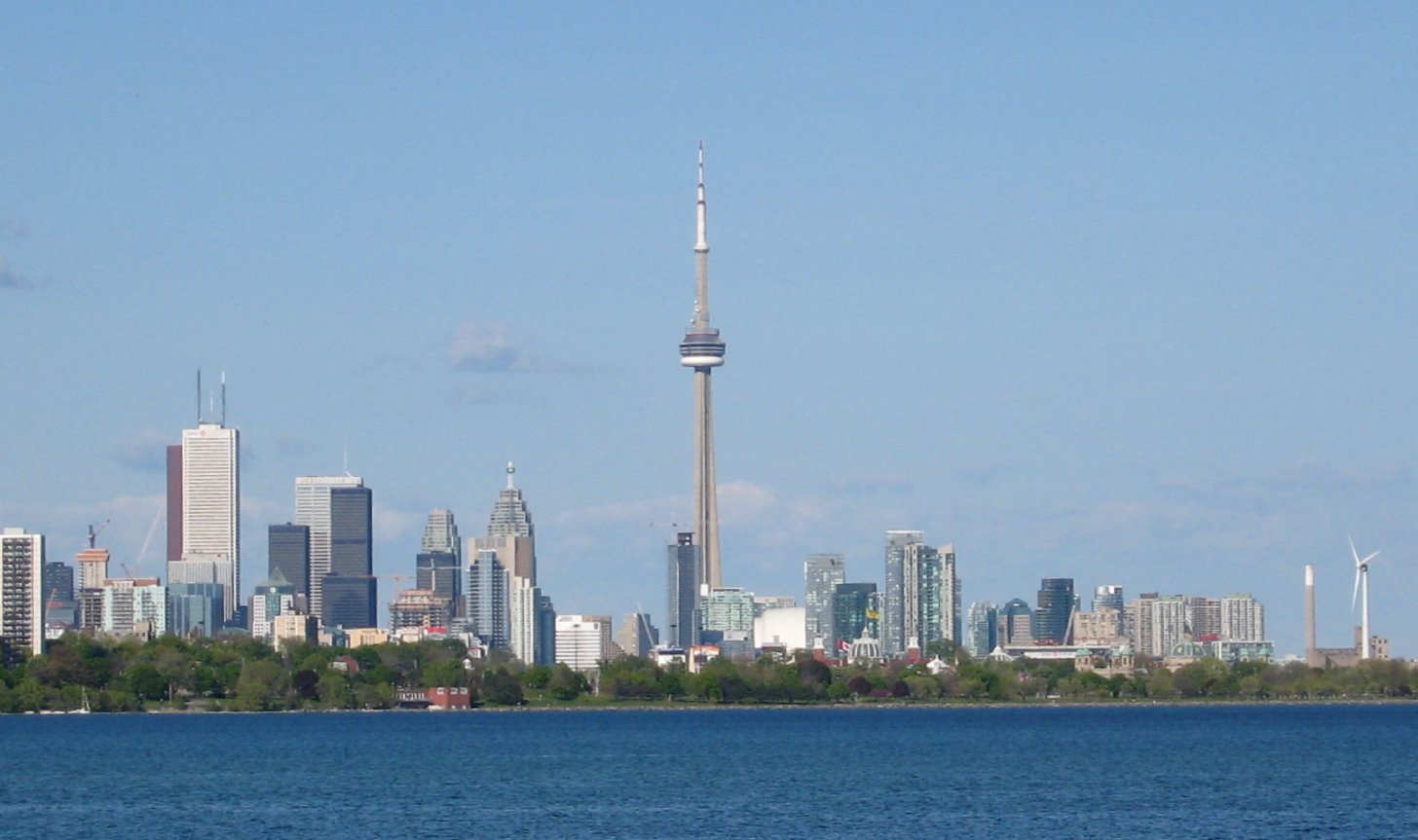Violent Schools in Divided City
School Board has little real power to overcome social divisions based on economic inequality
Toronto Star, January 13, 2008
David Hulchanski
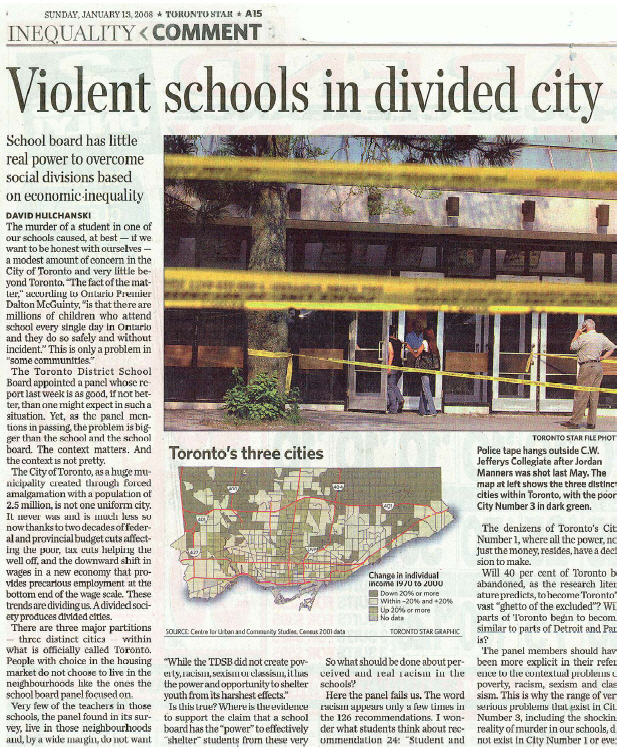 the matter,” according to Ontario Premier Dalton McGuinty, “is that there are millions of children who attend school every single day in Ontario and they do so safely and without incident.” This is only a problem in “some communities.”
the matter,” according to Ontario Premier Dalton McGuinty, “is that there are millions of children who attend school every single day in Ontario and they do so safely and without incident.” This is only a problem in “some communities.” The Toronto District School Board appointed a panel whose recently released report is as good, if not better, than one might expect in such a situation. Yet, as the panel mentions in passing, the problem is bigger than the school and the school board. The context matters. And the context is not pretty.
The City of Toronto, as a huge municipality created through forced amalgamation with a population of 2.5 million, is not one
uniform city. It never was and is much less so now thanks to two decades of federal and provincial budget cuts affecting the poor, tax cuts helping the well off, and the downward shift in wages in a new economy that provides precarious employment at the bottom end of the wage scale. These trends are dividing us. A divided society produces divided cities.
uniform city. It never was and is much less so now thanks to two decades of federal and provincial budget cuts affecting the poor, tax cuts helping the well off, and the downward shift in wages in a new economy that provides precarious employment at the bottom end of the wage scale. These trends are dividing us. A divided society produces divided cities.
There are three major partitions – three distinct cities -- within what is officially called Toronto. People with choice in the housing market do not choose to live in the neighbourhoods like the ones the school board panel focussed on.
Very few of the teachers in those schools, the panel found in its survey, live in those neighbourhoods and, by a wide margin, do not ever want to live in those neighbourhoods. These neighbourhoods, in what I call City #3 in my research, are now 60% non-white and very, very poor.
In the 1950s and 1960s they were new suburban middle income family neighbourhoods. It is an area that today we generally view as a sprawling bleak and desolate landscape. It lacks appropriate social services and even rapid transit. The average income in City #3 fell by 34% since 1970 relative to the Toronto average. In comparison, in City #1, the 20% of neighbourhoods where people with enough money choose to live, average incomes over the same period increased by 71%.
The panel’s report makes an unfortunate starting assumption: “While the TDSB did not create poverty, racism, sexism or classism, it has the power and opportunity to shelter youth from its harshest effects." Is this true? Where is the evidence to support the claim that a school board has the "power" to effectively "shelter" students from these very big and very bad contextual issues?
On racism the panel found “strong evidence that racism is a major concern of many black students” and that “the majority of black students perceive racial bias with respect to grading and disciplinary practices and feel that teachers treated some students better than others.” In addition: “Many black students also perceive racism outside of the school environment – especially with respect to policing activities and employment opportunities."
In contrast, their survey found the opposite among the teachers: “few teachers feel that unfair grading, unfair punishment and racial discrimination by teachers against students is a problem” and “few teachers support the hiring of more racial minority teachers.”
So what should be done about perceived and real racism in the schools? Here the panel fails us. The word racism appears only a few times in the 126 recommendations. I wonder what students think about recommendation #24: “Student and teacher surveys should be conducted every five years” to gather information about “perceptions of racism at school.” Or recommendation #31: “Multicultural, anti-racism staff development should be provided to teachers, administration, and school staff at every school.”
All of the most important recommendations require one thing: money. The panel recognizes the failure thus far of the provincial and federal governments to do more than sit on committees and help coordinate efforts. “Coordination and planning without resources are not only ineffective, they hold out the false hope that governments are making significant progress toward addressing the conditions of marginalized youth and communities." Yes, but … how and when will this change?
The denizens of Toronto’s City#1, where all the power, not just the money, resides, have a decision to make. Will 40% of Toronto be abandoned, as the research literature predicts, to become Toronto’s vast “ghetto of the excluded”? Will parts of Toronto begin to become similar to parts of Detroit and Paris?
The panel members should have been more explicit in their reference to the contextual problems of poverty, racism, sexism and classism. These issues explain why the range of very serious problems that exist in City#3, including the shocking reality of murder in our schools, but do not exist in City #1 or even City #2.
__________________
David Hulchanski is director of the University of Toronto’s Centre for Urban and Community Studies and the author of The Three Cities within Toronto: Income Polarization among Toronto’s neighbourhoods, 1970 to 2000 (see: http://www.gtuo.ca/).
